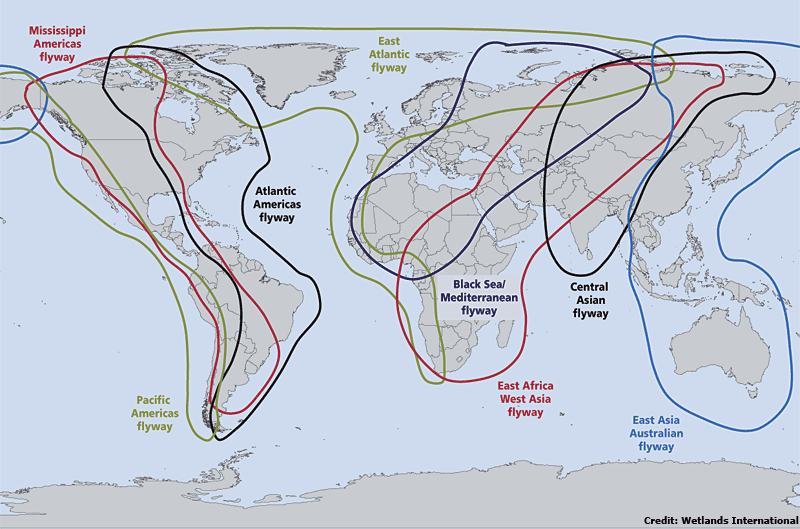> Planet
No borders for viruses and wild animals
Avian influenza virus (AIV) has been proved to be able to contaminate all types of avian species, including commercial poultry farms, wild birds, backyard domestic animals, live poultry, game birds and mixed poultry. AIV is generally more lethal for farmed species than for wild birds. Highly pathogenic avian influenza (HPAI) strains can cause severe outbreaks in the poultry population, causing the voluntary destruction of hundreds of millions of domestic birds. As it constantly evolves by mutation and re-assortment with the emergence of new subtypes, it occasionally infects humans exposed to contaminated poultry. Since 2003, less than 1000 human infections of H5N1 have been reported at world scale, with approximately 50% of mortality rate.
Intensification of local and global trade, and long-distance flights of infected migratory birds play a major role in the global geographical spread of avian influenza viruses. Over one hundred of wild species are major natural reservoir for AIV. At the crossroads of continents, Iceland and Alaska represent important locations for the intercontinental movement of AIV.
Farmed pigs may also be exposed to the presence of viruses in wild boar population. In 2007, African swine fever (ASF) was introduced in the Caucasus and has now spread to several countries in eastern and northern Europe. ASF has become endemic in wild boars over remarkably large areas and the scale of the problem now poses a major challenge to the European pig production sector, for wildlife management authorities and for hunters.


